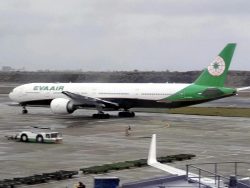Expressway Tolls: Public Understanding Should Be Premise of Variable Pricing System
15:13 JST, September 6, 2024
Measures to relieve expressway congestion are important for promoting decarbonization and other policies. When introducing a variable toll system, it is hoped that careful analyses of the impact will be conducted to gain sufficient public understanding.
An expert panel of the Land, Infrastructure, Transport and Tourism Ministry has begun discussions on the introduction of a “road pricing” system in which expressway tolls are changed according to time of day and other factors. The ministry plans to select model routes and implement the system on a trial basis beginning next fiscal year. Full-fledged introduction of the system nationwide will also be an issue for consideration, the ministry says.
According to the transport ministry, traffic congestion began decreasing in the mid-1990s due to the development of the road network. However, it has increased significantly since 2009, when full-scale discount tolls were introduced for expressways. The amount of congestion in 2023 was the highest level in 13 years.
Traffic congestion causes vehicles to travel more slowly, which reduces fuel efficiency and increases carbon dioxide emissions. It also increases logistics and other costs, resulting in significant economic losses. It is highly important to implement measures to relieve traffic congestion.
The transport ministry is considering a variable toll system as a new measure against traffic congestion. The ministry intends to disperse traffic volumes, for example, by charging relatively higher tolls during the daytime on holidays, when congestion is high, and lower tolls during late-night hours.
To study the new system, an experiment has been conducted since July last year, ahead of other locations, on the inbound lanes for Kawasaki on the Tokyo Bay Aqua-Line Expressway connecting Kisarazu, Chiba Prefecture, and Kawasaki.
In the experiment, the toll for standard-sized vehicles equipped with an electronic toll collection system has been raised from ¥800 to ¥1,200 between 1 p.m. and 8 p.m. on Saturdays, Sundays and holidays. Conversely, the toll has been lowered to ¥600 between 8 p.m. and midnight.
As a result, overall traffic volume increased by 3%, but the number of days with traffic congestion exceeding 10 kilometers was reduced by 26%, showing a positive effect.
However, company employees who only have free time on weekends and want to enjoy their vacation could perceive this change as only an increase in tolls.
If the system is applied nationwide without taking local circumstances into consideration, it is expected that dissatisfaction will grow among users. It will be necessary for the ministry to choose routes carefully.
In addition, there is a possibility that lowering tolls during the late-night hours could increase the number of commercial trucks operating on the routes at those times. To address overwork, regulations on overtime work for drivers have been tightened since April this year, and a situation must be avoided in which overtime work increases.
Meanwhile, in Hatsukaichi, Hiroshima Prefecture, where Itsukushima Shrine is located, the city government used subsidies to lower tolls on the expressway running parallel to the national highway, which is used by many tourists. As a result, traffic congestion on the national highway side has eased. This is a case in which how the change in tolls affects the behavior of users should be studied closely.
It is hoped that the ministry will compare various cases and identify the issues to be addressed.
(From The Yomiuri Shimbun, Sept. 6, 2024)
"Editorial & Columns" POPULAR ARTICLE
-

Artificial Intelligence Expands Possibilities for Foreign Language Learners
-

Build Intellectual, Physical Strength, As Well As Communicative Power / Japan Should Move from Beneficiary to Shaper of World Order
-

Global Economy in Turmoil: Prevent Free Trade System from Going Adrift / Risks to Financial Markets Must Be Heeded
-

Japan-China Strain Set to Persist as Beijing Officials Self-Interestedly Bash Tokyo; Takaichi Unlikely to Back Down
-

Elderly People Living Alone: What Should be Done to Ensure Living with Peace of Mind until the End?
JN ACCESS RANKING
-

BOJ Gov. Ueda: Highly Likely Mechanism for Rising Wages, Prices Will Be Maintained
-

Japan Govt Adopts Measures to Curb Mega Solar Power Plant Projects Amid Environmental Concerns
-

Core Inflation in Tokyo Slows in December but Stays above BOJ Target
-

Osaka-Kansai Expo’s Economic Impact Estimated at ¥3.6 Trillion, Takes Actual Visitor Numbers into Account
-

Major Japan Firms’ Average Winter Bonus Tops ¥1 Mil.
























